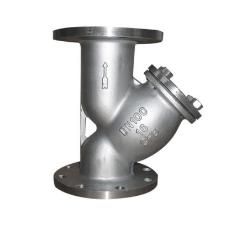Understanding Ring Flange Design and Its Applications in Engineering Systems
Understanding Ring Flanges A Comprehensive Overview
Ring flanges, a crucial component in various industrial applications, serve as a reliable means of connecting two sections of piping or machinery. These flanges are named for their circular shape and are commonly found in piping systems across industries such as oil and gas, water treatment, and chemical manufacturing. Understanding the function, types, and advantages of ring flanges can be beneficial for engineers and maintenance professionals in ensuring efficient and effective piping systems.
At their core, ring flanges provide a robust connection point. They are typically made from materials such as stainless steel, carbon steel, or other alloys, chosen for their durability and resistance to corrosion. The central feature of a ring flange is its raised face, which helps create a tight seal when bolted to a corresponding flange. This design minimizes the risk of leakage, which is critical in maintaining system integrity and safety.
There are several types of ring flanges, each tailored for specific applications. The most common types include slip-on flanges, weld neck flanges, blind flanges, and threaded flanges. Slip-on flanges are designed to slip over the pipe and are easy to install. Weld neck flanges, on the other hand, are welded to the pipe, providing a strong joint that can withstand high pressures. Blind flanges are used to close off the ends of pipes, while threaded flanges are designed for easy connection without the need for welding.
ring flange

One significant advantage of ring flanges is their versatility. They can accommodate various pipe sizes and materials, making them ideal for a wide range of applications. Additionally, the use of ring flanges simplifies maintenance and repair processes. When a section of piping needs to be replaced or repaired, the flanges can be easily unbolted, allowing for quick access to the system without the need to cut or weld pipes.
Moreover, the use of ring flanges in assembly line processes cannot be overstated. Their design allows for efficient alignment and stability, which is essential in maintaining the overall integrity of the piping system. Precise alignment reduces the risks associated with uneven stresses that can lead to failures or leaks, ensuring longer operational life and reliability.
In conclusion, ring flanges are a fundamental component in the piping world, offering robust connections while ensuring safety and ease of maintenance. Their various types cater to different needs within the industry, highlighting their adaptability to numerous applications. As industries continue to evolve, the importance of high-quality flanges like ring flanges will remain pivotal in sustaining efficient and safe operations. Whether in a manufacturing plant or a wastewater treatment facility, understanding the role of ring flanges can lead to better design choices and enhanced system performance. As technology advances, the materials and designs of these essential components will likely improve, further solidifying their role in industrial applications.
-
The Key to Fluid Control: Exploring the Advantages of Ball Valves in Industrial SystemsNewsJul.09,2025
-
The Versatile World of 1, 2, and 3 Piece Ball ValvesNewsJul.09,2025
-
Stainless Steel Ball Valves: The Ideal Choice for Efficient Flow ControlNewsJul.09,2025
-
Optimizing Fluid Control with Ball Float ValvesNewsJul.09,2025
-
Manual Gate Valves: Essential for Control and EfficiencyNewsJul.09,2025
-
Everything You Need to Know About Butterfly ValvesNewsJul.09,2025
-
The Versatility of Wafer Type Butterfly ValvesNewsJul.08,2025




